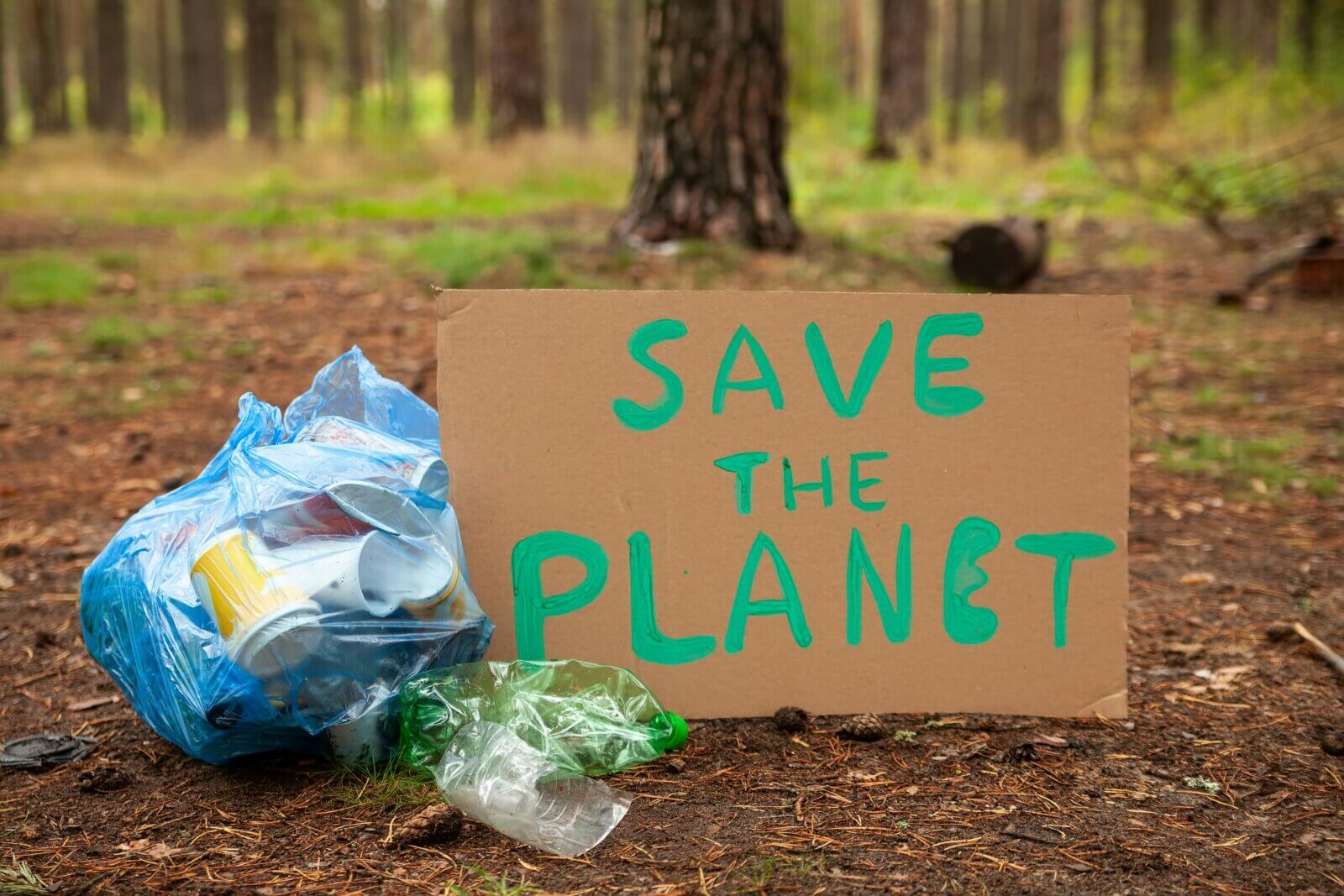
The mysterious story of Lviv's garbage: why it travels more than you do. 4 years of travelling
Who would have thought that Lviv, the cultural capital of Ukraine, with architectural monuments, churches, and elite coffee shops at every turn, would be on the verge of an environmental disaster. That Lviv's garbage will be found in every region of Ukraine. That the construction of the waste processing plant will be delayed for years. - We conducted an online investigation and found out where the garbage from [...]
Content:
Who would have thought that Lviv - the cultural capital of Ukraine, with architectural monuments, churches, and elite coffee shops at every turn - would be on the verge of an environmental disaster. That Lviv's garbage will be found in every region of Ukraine. That the construction of the waste processing plant will be delayed for years. - We conducted an online investigation and found out where Lviv's waste is going now and when it will be disposed of legally.
1956 - the beginning of history
Back in 1956, a landfill spontaneously formed in the small village of Hrybovychi in the Lviv region. 3 years later, it was declared an official landfill and waste from Lviv was brought there. This landfill was supposed to be closed in 25 years (in 1984), but this did not happen in 30 or even 40 years. Local residents advocated for the landfill to be closed as soon as possible, but the authorities either ignored these requests or bought local officials - it's easy enough to "persuade" a small village when you have millions of hryvnias. For example, you can promise to repair school toilets, build a kindergarten, or install new bus stops.
In 2003, the chief sanitary doctor of the regional centre issued a decree to stop operating the landfill. However, the official closure was still a long way off. A project was even developed landfill reclamation and UAH 4 million was allocated for the work. But the landfill continued to fill up with garbage for another 13 years, until the worst happened.
Landfill reclamation is a costly set of measures, the funds for which are allocated simultaneously with the opening of the landfill. The landfill is covered with a special film and covered with earth (often clay or soil with clay). Then, wells are drilled through which biogas will flow to collection points. The collected gas is purified from impurities and used as heat or electricity.
2016 - a tragedy
In May 2016, the Gribovitske landfill began fire. Rescuers arrived at the scene of the fire. At the same time, a landslide occurred: a huge layer of garbage about 60 metres high (the height of a garbage heap is 35-90 metres) went down and buried three employees of the Ministry of Emergency Situations and an environmental engineer from the Lviv municipal enterprise Zbyranka. A day later, the men were found dead with numerous burns on their bodies and nasopharynx. This is a terrible way to die: to suffocate under an avalanche of rubbish the size of a 20-storey building.
Mourning was declared in Lviv for the victims, condolences were expressed to their families, and the landfill was finally closed by court order. At the cost of people's lives.
Fires at landfills are a common occurrence. They are caused by landfill gas: a mixture of methane, sulphur compounds, carbon dioxide and other substances. This gas is produced by aerobic and anaerobic bacteria. When the temperature inside the waste heap rises, it spontaneously ignites.
Lviv Mayor Andriy Sadovyi claimed that the landfill was set on fire on purpose as a political provocation. However, the Prosecutor General of Ukraine, Yuriy Lutsenko, denied this version, saying that the examination confirmed spontaneous combustion.
2016-2017 - garbage travels in Ukraine
Since the closure of the landfill near the village of Hrybovychi, Lviv's garbage could be called "homeless". There was nowhere else to take it, so it had to be taken to landfills in other regional centres, hidden like dust under the mattress. Lviv's garbage started to be found in Vinnytsia, Dnipro, Sumy, Donetsk, Poltava, Zaporizhzhia, Zhytomyr, Cherkasy regions, and even in the Chernobyl zone. Trucks filled with waste travelled in convoys to neighbouring and distant regions of the country, unloading garbage at landfills, and sometimes simply in fields and forest belts.
But if you hide hundreds of tonnes of rubbish for a long time, sooner or later someone will notice. When residents of other neighbourhoods saw garbage trucks coming, they blocked the roads. The mayor of Lviv, Andriy Sadovyi, negotiated with the local authorities and managed to dump the waste "quietly". Sometimes it was necessary to act illegally, but it was still discovered later: 11 criminal cases were opened over illegal waste dumping.
Mayor Sadovyi tried to find a way out. For example, he proposed to take Lviv's garbage to the Chornobyl zone, which he announced at one of the briefings. He even wanted to transport the waste to neighbouring Poland and appealed to the Lublin city authorities with a by official requestbut was refused. By then, the media space had already exploded with a fountain of indignation, "garbage travel" maps and freshly created memes.
Meanwhile, the garbage had to be taken out every day. Cubic metres of waste.
How Lviv ended up on the verge of an environmental disaster
To better understand the scale of the problem, let's start with the numbers:
- The population of Lviv is 721,301 people (data for 2017);
- more than 1.2 million people in the Lviv agglomeration
- Every day, residents bring 650-700 tonnes of garbage to the bins.
If all this garbage is not taken to a landfill, within a few days the containers overflow, mountains of blue and black bags grow around them, and plastic bags start flying everywhere. As the days pass, the piles grow, rats appear around them, worms crawl, flies fly. Each site with bins installed on it turns into an antioasis or a mini-version of a natural dump. This is exactly what happened in Lviv.
Lviv's garbage was not being collected, and residents continued to put it near the growing pile and wonder: "What's going on?". Some dumps near houses covered an area of several tens of square metres. Even some taxi drivers began to focus on garbage heaps instead of house numbers (from a report by the online media outlet STRANA.UA).
The situation became so serious that the Emergency Situations Commission of the Lviv City Council sent a request to the Cabinet of Ministers and the National Security and Defence Council to recognise Lviv as an environmental disaster area. The risk of spreading infectious diseases was deemed very high, so the question of evacuating children from the city was raised.
In mid-July 2017, the passions died down a bit: all the waste was removed from Lviv. We cleaned 677 sites and transported 12,655 tonnes of solid waste.
In the same year, Lviv received a €35 million loan from the European Bank for Reconstruction and Development to solve its waste problem. 10 million (non-refundable grant) was allocated for the reclamation of the landfill in Hrybovychi, and 25 million (interest-free loan until 2021) was allocated for the construction of a waste processing plant at Lviv CHP-2.
Let's take a look at where these funds have been and will be spent in the future.
2018-2020 - where garbage is now taken from Lviv
Two years have passed since 2017, but during this time, the waste processing plant has not been built and the landfill has not been filled in, only the first preparatory work has been carried out. Meanwhile, the loan money is being used in full. It is spent on payments to cities that now accept Lviv's waste at their landfills.
Waste from Lviv is currently transported and dumped at landfills in the vicinity of four cities: Busk, Stryi, Zhydachiv, and Starokostiantyniv. In March 2020, Lviv authorities allocated UAH 2.2 million to these cities for socio-economic development.
Despite the fact that there are places where waste can be temporarily taken, Lviv's garbage continues to find its way to other cities. In January 2020, it was discovered in Bukovyna near Khotynwhere an irresponsible lorry driver dumped it 500 metres from a legal landfill - right in the middle of the forest.
In March 2020, the deputy head of the Lviv Regional Council, Bohdan Hahalyuk, reported that calls continue to be received from different regions of Ukraine, in which people report the illegal arrival of Lviv garbage at their landfills. Cases recorded in Ternopil, Khmelnytsky and Chernivtsi regions. It didn't even require any investigation: the pile included receipts from Lviv shops, utility bills, and greeting cards.
To enable residents to keep track of where their waste is going, Municipal Company "Zelenyi Misto" has allocated UAH 1.6 million to cover its activities in the media and to create a website that will show where waste is taken from the city. The funds have already been raised, but the website is still under development. Perhaps the authorities still want to hide the true state of affairs. However, the company describes its activities in detail on its official website at Facebook.
Why is there still no waste recycling plant?
Since 2009, Lviv City Hall and the Lviv Regional State Administration have been promising that the landfill in Hrybovychi would be closed and reclaimed, and a modern and environmentally friendly waste processing plant would be built next to it. In this regard, companies from Poland, China, Italy, Germany, Lithuania, and Turkey started offering their services 14 countries and 43 companies in total. It would seem that it would be easy to choose among them the one that could be entrusted with the construction of the plant. However, Lviv rejected all of them, and the reasons for the rejection were rather vague and were not publicly announced.
According to a Lviv environmentalist, businessmen refused to do so as soon as they learned about the amounts they had to pay into numerous "environmental" funds.
In 2019, we held a tender and selected 5 companies out of 11 and announced official list. Also. developed a project that has already passed a comprehensive state examination and received a positive opinion from the Ministry of Ecology. They have even allocated a plot within the city, but in an industrial area, near the Lviv Vodokanal treatment plant, where the nearest residential building is more than a kilometre away.
In 2018, the mayor of Lviv assured the population that no waste processing plant would be built within the city. Then he himself decided that it would be located in Lviv and announced the location of the future construction: 13 Plastova St.. City activists tried to appeal this decision, but the court did not satisfy their claims and the plant will still appear within the city. However, it is claimed that it will operate without harmful emissions and bad smell. In addition, in accordance with the requirements of the Ministry of Environment, an additional system for the treatment of technical and rainwater will be built.
The Lviv waste recycling plant will sort and compost dry and wet waste and recyclable materials, and will also set up sites for collecting construction and bulky waste and used electronics. The construction of the plant and the reclamation of the landfill in Gribovychi will be monitored by Hydrotera, a Lithuanian company.
The total capacity of the plant is 250 tonnes of recycled waste per year. 35% of this is intended for landfill disposal, while the rest is recyclable material, technical compost and RDF fuel. The greatest attention will be paid to food waste recycling, as it accounts for about 50% of the total MSW.
At what stage is the plant construction and landfill reclamation in 2020
Landfill in Gribovychi village
According to the reports of Zelenyi Misto, preparations have been completed at the landfill in the village of Gribovychi, which will allow us to start comprehensive reclamation. Right now, the following is happening installation of an infiltrate treatment plant . It will treat 300 m3 of leachate per day. The plant was planned to be launched in March 2020, but due to quarantine, this date has been postponed.
Waste processing plant on Plastova Street
On 2 March 2020, the company started work on the allocated site where the plant will be built, the tenderers arrived - Preparatory work is currently underway there. Representatives of the companies got acquainted with the geographical and technical features of the selected area.
7 March There was a conflict: residents of Plastova Street came to the construction site. They blocked the construction site, began to interfere with the work of the equipment and called the police. Together with the police and lawyers of Zelenyi Misto, we explained to the people that the construction was being carried out in compliance with all the rules approved by law.
Why we told this story
The area of legal landfills in Ukraine is at least 260 thousand hectares. This is billions of tonnes of waste, some of which is toxic and dangerous. At the same time, only one of the 4 incineration plants (in Dnipro, Kyiv, Rivne, Sevastopol, Kharkiv) is in operation (Kyiv's Energia plant), and there is no waste recycling plant at all.
Thanks to the "garbage scandal" and comprehensive media coverage, Lviv has a chance not to let the matter slide, but to bring the critical waste situation to a proper solution.
We hope that the terrible situation with Lviv's garbage will be an impetus for the development of a waste recycling system not only in Lviv, but also in any other large city in Ukraine.






